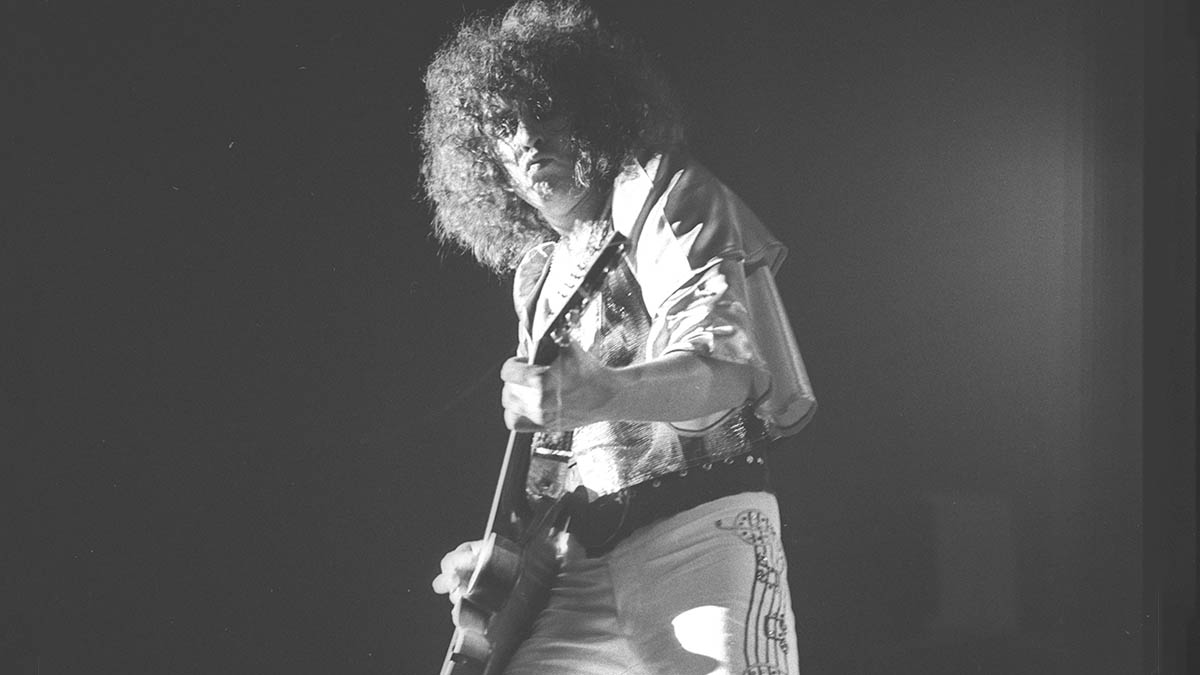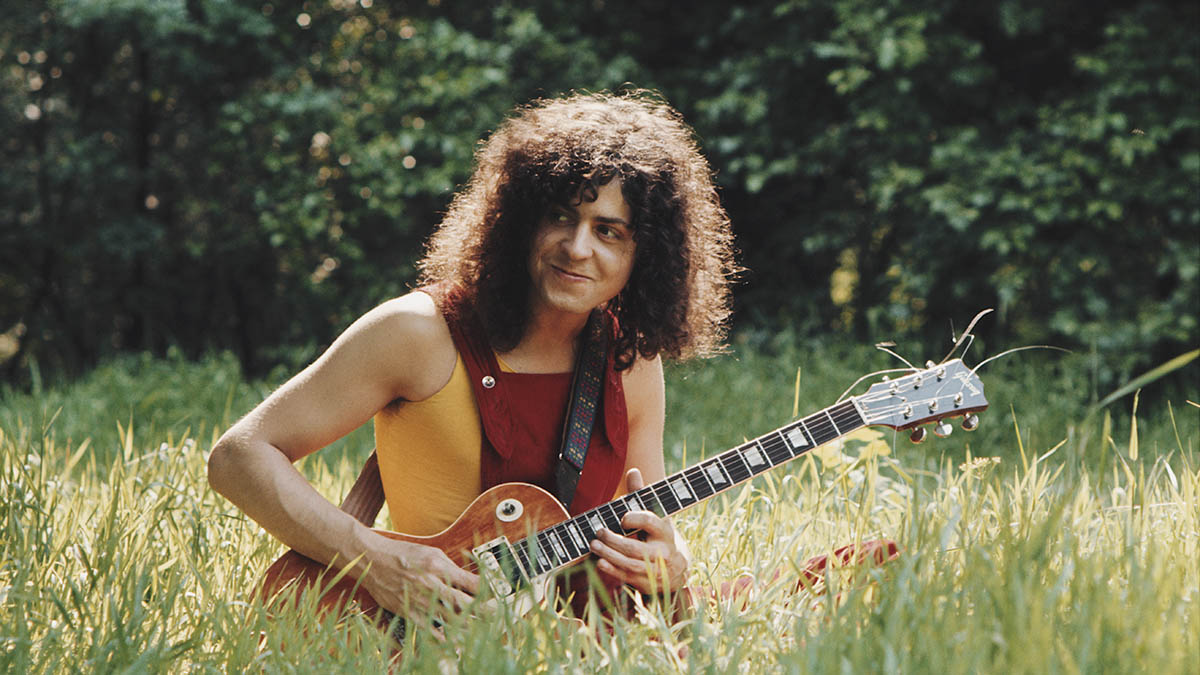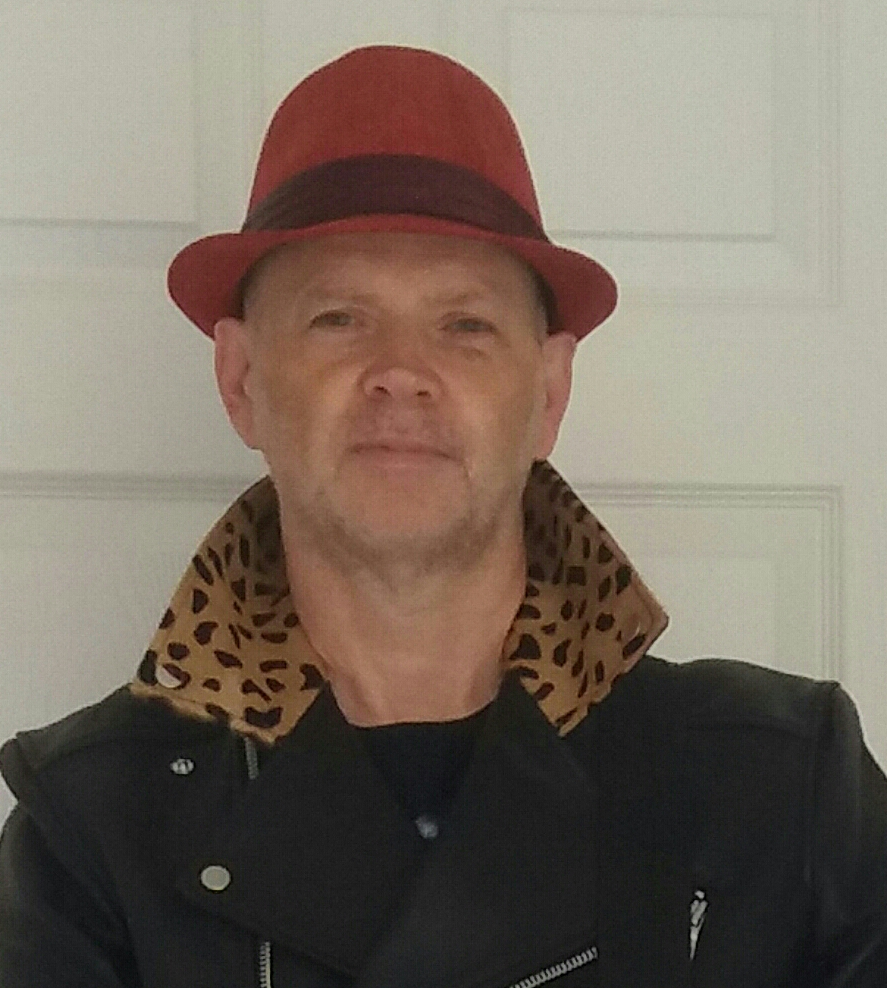Tony Visconti reflects on the genius of T. Rex's Marc Bolan
“Marc is criminally underrated as a guitarist. All rock ’n’ rollers love T. Rex, and there’s a little bit of T. Rex in every rock ’n’ roll band”

2021 sees the 50th anniversary of the release of Electric Warrior in 1971, for many the ultimate T. Rex album and the perfect encapsulation of Marc Bolan’s genius. Having spent years toiling away on the club and festival circuit with his acoustic duo, Tyrannosaurus Rex, Bolan fully embraced the sound of electric guitar and the spirit of rock ’n’ roll to score his first hit with Ride a White Swan in 1970.
Its massive success turned Bolan into a global superstar, with incredible hit singles appearing every three months for the next three years. Most of the planet was in the grip of T. Rextasy, likened at the time to the fevered devotion of Beatlemania.
While the world was swooning over Bolan’s pin-up looks and killer hooks, the U.S. was strangely resistant, with Bolan’s only notable success being Bang a Gong in 1971. Bolan’s run of hits started to dry up in the mid-'70s as the punk era dawned in the U.K., but his influence was immense, to the point that he was one of the few acts that wasn’t subject to the “year zero”-style condemnation of so much that had preceded punk.
Electric Warrior, like most of Bolan’s best albums, was produced by Tony Visconti, who was also working closely with David Bowie around the same period. Visconti’s role in the success of T. Rex can’t be overstated; his string arrangements were a key element of the distinctive T. Rex sound, and he knew how to get the very best out of Bolan in the studio.
His memories of working with Bolan make for fascinating reading. [His interview about working with Bowie and Mick Ronson on the making of The Man Who Sold the World is a perfect companion to this feature.]
Bolan’s career was tragically cut short in 1977, when he died in a car crash while riding in the passenger seat of the car his girlfriend, Gloria Jones, was driving. While it is impossible to know how his career would’ve panned out, he was undergoing a critical and artistic reassessment at the time of his passing.
What can be said with certainty is that he left behind a body of work that sounds as fresh and relevant now as it ever did. There are few thrills as visceral as turning the music player of your choice up to max and letting the intro to Bang a Gong transport you back to the golden age of glam rock ’n’ roll.
Get The Pick Newsletter
All the latest guitar news, interviews, lessons, reviews, deals and more, direct to your inbox!
How much demoing did Bolan do prior to recording? Did he bring in basic acoustic demos or fully formed suggestions?
“He was very secretive about his demos. He never brought a demo to the studio; he would teach everyone the song on the spot. Marc was terrified of being ripped off; he would have never handed demos out to anybody. Everything you hear on a T. Rex record was a live recording; nothing was replaced later on. His session guitar was the one on the left speaker, and his overdub – done about 15 minutes after we’d decided a track was a keeper – was on the right speaker.“
Electric Warrior is packed with great moments. The guitar solo on Mambo Sun is classic Bolan, perfectly constructed and economical. Did he come prepared or work out his solos in the studio?
“He did both. Some were made up in the studio, and if you saw him play live, he could really improvise; he had no problem playing a 20-minute solo. [Laughs] He was a smart lad. Mambo was worked out at home, including the double-tracked part that was an octave lower.“
Bolan was very hip to the roots of rock ’n’ roll and rockabilly. Jeepster owes a huge debt to Howlin’ Wolf’s You’ll Be Mine, and We Love to Boogie borrows heavily from Webb Pierce’s Teenage Boogie, even lifting the solo. Who was influencing him?
“He was more of a blues guy than me. He listened to the early blues players a lot. We both loved R&B and Little Richard. Little Richard was a huge inspiration to Marc. Marc turned me on to James Burton, those great solos on the Ricky Nelson singles. I’d always loved those records but I’d never known the guitarist’s name. Marc was definitely very knowledgeable.“
For Cosmic Dancer I had about 25 string players. We had the budget because we had the hit
Your string arrangements are an essential component of the T. Rex sound. The strings on Cosmic Dancer are a great piece of music in their own right. What was the collaborative process?
“Marc recognized my string writing early in the Tyrannosaurus Rex days and that was my domain exclusively; he wouldn’t question anything or have any suggestions. What he loved was that I would pick up on his riffs and some of his solos and use some of those ideas in the arrangements. For Cosmic Dancer I had about 25 string players. We had the budget because we had the hit, of course.
“I was trained classically; I’m a classical guitarist and I studied some writing at school, but I was largely self-taught. I’d have a reel-to-reel and fiddle around with my classical guitar and work the parts out then write them down. It took me ages to write those parts. Now I could do the arrangement for Cosmic Dancer in about three hours; at that time it might have taken three days.“
The strings set the T. Rex hits apart from their contemporaries, acts like Slade, Roxy Music and Bowie. They were almost a signature sound for T. Rex.
“We realized early on that it was a signature sound, as you say. Bang a Gong didn’t have a written string part. Marc wanted to go without the strings, but I said that as we’d had a few hits with strings already, maybe we should add some to this one, because, as you say, it was identifiable as his sound.
“This discussion was taking place while the string players were sitting in their seats. Marc looked slightly terrified at that remark. He said, 'Well, what can we do?' I simply asked the string players to all play the root note of the three chords in the chorus – G, A and E. It was so simple but it was very effective.“

Bolan’s solo on Lean Woman Blues is one of his strongest. His vibrato is very distinctive and reminds me of his vocal vibrato. He always seemed very confident in his abilities as a guitarist. Was that a fair assessment or was it bluff?
“He was unique; he was not bluffing. His technical knowledge guitar-wise was not great at all. He knew a handful of chords, the right ones, of course, for rock ’n’ roll. He invented his own technique with that very fast vibrato – he had very strong hands. I think you’re right in that it probably did go hand-in-hand with his fast vocal vibrato. He did actually woodshed for hours to get that good.
I suspect Hendrix was more aware of what he was doing than Marc was in terms of modality, I think because Hendrix understood jazz
“One thing that he did that was really weird was that he might be soloing in the key of E, but then he’d slide up three frets and be playing solos out of the G blues box. Some of those notes are modally not the correct notes but he just played with abandon. I think that explains some of his unusual note choices. Sometimes he’d perhaps even slide up another fret from the G position. It gave him almost a Hendrix sensibility; he really loved Hendrix.
“I suspect Hendrix was more aware of what he was doing than Marc was in terms of modality, I think because Hendrix understood jazz. Eric Clapton was another player Marc loved. June [Bolan’s wife] was Eric’s girlfriend before she met Marc. She took him to Clapton’s house for a weekend and Marc told me that he sat on the floor and watched Clapton play for the whole weekend. He said to me, 'I sat at the feet of the master.' He copped a lot of blues techniques from watching Clapton. He was a very quick learner.“
The groove of Bang a Gong is irresistible. Something often overlooked on this oft-covered song is the importance of the backing vocals.
“We all had a go at the backing vocals. Marc had the idea for Flo and Eddie to sing the chorus an octave higher. They cooked up that arrangement between the three of them. They were alumni of Zappa, and I think some of the oohs on the chorus may have come from their time with Frank. Marc and I loved old doo wop, as did Zappa.“
You’ve worked with many great guitarists over the years. How would you rate Marc in comparison?
“This is where Marc is different from all of the classic rock guitarists. He was cut from a different cloth; he invented himself. He had his own thing. To compare him to Ronson and Fripp and others I’ve worked with is difficult as his recording career was too narrow. Ronson worked with loads of other people so you get an idea of where he stood and how he could adapt his style. We can’t make that comparison for Marc because he never really played with other artists. Marc is criminally underrated as a guitarist. All rock ’n’ rollers love T. Rex, and there’s a little bit of T. Rex in every rock ’n’ roll band.“
We all knew he could play really fast and accurately and get a great tone out of whatever he played, but what he was doing was exactly the right thing for Ride a White Swan
I would argue that the most important thing for a guitarist to be is “effective,” to have the ability to deliver exactly what the song requires, regardless of how easy it might be to play. A prime example would be the solo on Ride a White Swan, Bolan’s breakthrough hit. He knew when to self-edit, didn’t he?
“Yes. We all knew he could play really fast and accurately and get a great tone out of whatever he played, but what he was doing was exactly the right thing for Swan. The hooky part was the key to its success and why it broke him through into the major leagues. The riff and solo is almost a Burton/Chet Atkins idea. Swan used a capo at the 4th fret so he could play those open string licks. He also played the bass part on my Precision and he again used the capo at the 4th fret as well.
The band members are often overlooked when T. Rex are discussed. Bass player Steve Currie never plays the obvious, predictable lines. His basslines are a key element to the propulsive nature of the rhythm section. Was much time spent working on those ideas in the studio?
“He was basically left to his own devices. I loved his playing. It was amazing. I can see where his jazz sensibilities came out. Steve would go to places where an average rock player would never venture and often made some simple music sound very complicated. He was one of the secret weapons of the T. Rex sound.“
You’ve produced many iconic albums. Where do you rate Electric Warrior?
“I think Electric Warrior is my favorite T. Rex album, partly because of the different ways we recorded and how we worked in a lot of studios – New York, LA and several in London. Marc was on tour so I had to catch him on the road to record. All the strings and mixing were done at Trident Studios in London. It took a lot of work to put the whole album together. I think it was a masterpiece, but I also like the following two albums, The Slider and Tanx, very much.“
I loved the fact that he dressed to record. He wore his stage gear and his platform shoes. He’d be jumping up and down like he was on stage
Fans will argue that Bolan was undergoing a creative revival at the time of his death. Do you think he could’ve gone on to revitalise himself in terms of creativity and ideas?
“I agree with everyone who says he died too young. In the last couple of years of his life, I think his image was very important to him; he wanted to appeal to the fans that he had who had been teenyboppers, but who were now older. Had he lived I think he would have found someone like myself, or we’d have gotten together again. We did speak to each other after we stopped working together and it was always big hugs and talking about our kids. It was in the cards that we’d do something else.“
What are your fondest memories of working with Marc?
“I loved that the sessions were very live. I also loved the fact that he dressed to record. He wore his stage gear and his platform shoes. He’d be jumping up and down like he was on stage; everything was really great fun. We also invited friends to the sessions, so he liked to see maybe five or six people bouncing about in the control room. He always loved an audience.“
Mark is a freelance writer with particular expertise in the fields of ‘70s glam, punk, rockabilly and classic ‘50s rock and roll. He sings and plays guitar in his own musical project, Star Studded Sham, which has been described as sounding like the hits of T. Rex and Slade as played by Johnny Thunders. He had several indie hits with his band, Private Sector and has worked with a host of UK punk luminaries. Mark also presents themed radio shows for Generating Steam Heat. He has just completed his first novel, The Bulletproof Truth, and is currently working on the sequel.
“It was tour, tour, tour. I had this moment where I was like, ‘What do I even want out of music?’”: Yvette Young’s fretboard wizardry was a wake-up call for modern guitar playing – but with her latest pivot, she’s making music to help emo kids go to sleep
“There are people who think it makes a big difference to the sound. Stevie always sounded the same whether it was rosewood or maple”: Jimmie Vaughan says your fretboard choice doesn’t matter – and SRV is his proof









![John Mayer and Bob Weir [left] of Dead & Company photographed against a grey background. Mayer wears a blue overshirt and has his signature Silver Sky on his shoulder. Weir wears grey and a bolo tie.](https://cdn.mos.cms.futurecdn.net/C6niSAybzVCHoYcpJ8ZZgE.jpg)

![A black-and-white action shot of Sergeant Thunderhoof perform live: [from left] Mark Sayer, Dan Flitcroft, Jim Camp and Josh Gallop](https://cdn.mos.cms.futurecdn.net/am3UhJbsxAE239XRRZ8zC8.jpg)
